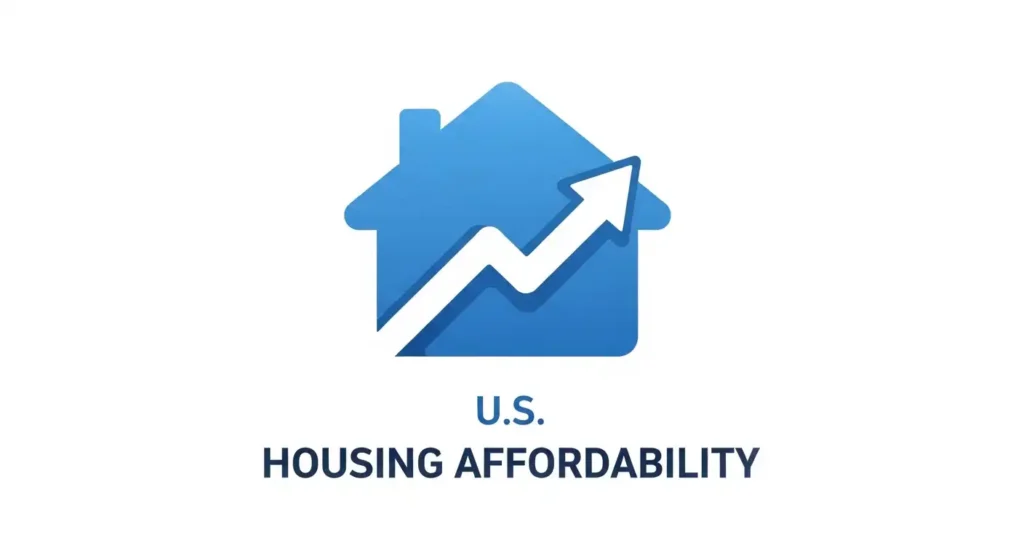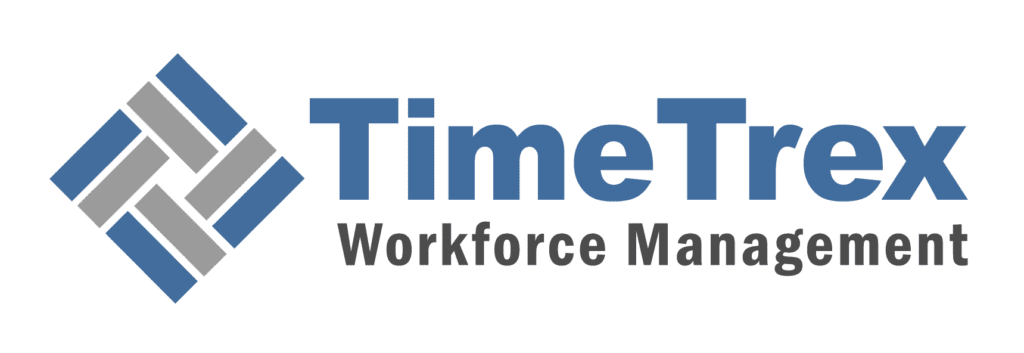
The State of U.S. Housing Affordability: 2025
TL;DR
The U.S. is facing a severe housing affordability crisis, with home prices dramatically outpacing income growth. The national median home price has soared past $410,000, while real median household income lags, making homeownership financially impossible for many. This national problem is driven by a chronic housing shortage of over four million homes, high mortgage rates creating a "lock-in" effect for current owners, and soaring ancillary costs like property taxes and insurance. Regional disparities are vast: the Midwest and South remain relatively affordable, while the West Coast and Northeast face an acute crisis fueled by restrictive policies and high demand. This report concludes that the crisis is fundamentally a supply-side problem, requiring significant policy reforms to increase housing construction and restore the balance between wages and housing costs.
In This Article
Part I: The National Landscape: An Unprecedented Affordability Crunch
The American housing market has reached a critical inflection point. The long-held aspiration of homeownership, a cornerstone of economic security for generations, is now under immense pressure from a confluence of economic forces. A detailed examination of national trends reveals a fundamental decoupling of housing costs from the earning power of the typical American household, creating an affordability crunch of unprecedented scale and scope.
The National Picture: A Widening Chasm
In 2025, the dream of homeownership is becoming increasingly difficult for the average American. The national median home price has soared to a point where it now takes over seven years of the median annual salary to afford a home. This starkly contrasts with the traditional affordability benchmark of three years, highlighting a significant and growing housing crisis.
Years of Salary to Buy a Home
7.5x
(National Average Ratio)
States vs. National Average
The Widening Chasm: A Two-Decade Divergence of Prices and Incomes
The central narrative of the U.S. housing market over the past two decades is one of divergence. While both home prices and incomes have risen, the pace of their growth has been dramatically imbalanced, creating a chasm that represents the core of the current affordability crisis. In the second quarter of 2025, the median sales price of a home sold in the United States reached $410,800. This figure marks a substantial escalation from two decades prior; in 2005, the median sales price was $232,500. This represents a nominal increase of 76.7%. In stark contrast, household income has failed to keep pace. According to the U.S. Census Bureau's Current Population Survey (CPS), the real median household income in 2024 was $83,730. The consequence of this divergence is a structural shift in the financial requirements for homeownership. The current national median home price is nearly five times the median household income, breaking the long-standing financial rule of thumb where a home costs roughly three times annual income.
The True Cost of Homeownership: Beyond the Sticker Price
The affordability crisis extends far beyond the sale price. The total monthly financial obligation of homeownership—commonly referred to as PITI (Principal, Interest, Taxes, and Insurance)—has been driven to record highs.
- Mortgage Rates: The effective 30-year fixed mortgage rate, hovering between 6.4% and 6.9% in mid-to-late 2025, has severely diminished the purchasing power of prospective buyers.
- Property Taxes: With effective rates ranging from 0.27% in Hawaii to 2.33% in New Jersey, property taxes add a substantial recurring expense that varies dramatically by state.
- Homeowners' Insurance: Premiums are surging nationwide, driven by climate-related disasters and inflation. The average annual cost ranges from $936 in Vermont to an astonishing $5,640 in Florida, creating a new, formidable barrier to homeownership.
Measuring the Strain: National Affordability Indices and Cost Burdens
Several key national metrics quantify the strain on American households. The NAR Housing Affordability Index (HAI) fell to 94.4 in June 2025, a clear signal that the median-income household can no longer afford the median-priced home. The number of "cost-burdened" households (spending over 30% of income on housing) reached a record 22.4 million for renters and 19.7 million for homeowners. Finally, the national "Housing Wage"—the hourly wage needed to afford a modest two-bedroom rental—is $32.11, far exceeding the federal minimum wage and the median wage for millions of workers.
Part II: A State-by-State Dissection of Housing Affordability
While the national data paints a grim picture, the reality of the U.S. housing market is a patchwork of highly divergent local conditions. A state-level analysis reveals a wide spectrum of affordability, from markets where homeownership remains attainable to those where it has become an exclusive privilege.
The Affordability Spectrum: State by State
While the national picture is daunting, affordability varies dramatically across state lines. The Midwest and parts of the South offer a more accessible path to homeownership, whereas the West and Northeast are home to the most challenging markets in the nation.
Most Affordable States
Least Affordable States
The Affordability Matrix: A 50-State Comparison
To provide a holistic and comparative view, the following matrix synthesizes key data for all 50 states and the District of Columbia. It incorporates the full ecosystem of costs—including financing, taxes, and insurance—to determine the true financial burden of homeownership. The monthly PITI (Principal, Interest, Taxes, Insurance) payment is calculated based on the state's median home price, assuming a 20% down payment and a 30-year fixed-rate mortgage at 6.40%.
| State | Median Home Price | Median Household Income | Price-to-Income Ratio | Est. Monthly PITI | PITI as % of Income | "Housing Wage" | Property Tax Rate | Avg. Home Insurance |
|---|---|---|---|---|---|---|---|---|
| Alabama | $282,400 | $66,659 | 4.2 | $1,733 | 31.2% | $20.61 | 0.38% | $3,076 |
| Alaska | $400,500 | $95,665 | 4.2 | $2,284 | 28.7% | $33.35 | 1.14% | $957 |
| Arizona | $470,200 | $81,486 | 5.8 | $2,787 | 41.1% | $30.49 | 0.52% | $2,343 |
| Arkansas | $255,300 | $62,106 | 4.1 | $1,550 | 29.9% | $18.98 | 0.57% | $3,119 |
| California | $866,100 | $100,149 | 8.6 | $5,248 | 62.9% | $49.61 | 0.71% | $1,632 |
| Colorado | $640,000 | $97,113 | 6.6 | $3,767 | 46.5% | $36.79 | 0.49% | $3,375 |
| Connecticut | $466,000 | (N/A) | (N/A) | $3,044 | (N/A) | $35.61 | 1.92% | $1,677 |
| Delaware | $396,100 | (N/A) | (N/A) | $2,185 | (N/A) | $29.75 | 0.53% | $966 |
| District of Columbia | $920,000 | (N/A) | (N/A) | $5,200 | (N/A) | $44.50 | 0.58% | $1,498 |
| Florida | $433,600 | (N/A) | (N/A) | $2,965 | (N/A) | $37.27 | 0.79% | $5,761 |
| Georgia | $374,700 | (N/A) | (N/A) | $2,207 | (N/A) | $27.91 | 0.81% | $1,979 |
| Hawaii | $975,500 | (N/A) | (N/A) | $5,130 | (N/A) | $49.19 | 0.27% | $1,296 |
| Idaho | $474,700 | (N/A) | (N/A) | $2,658 | (N/A) | $26.83 | 0.53% | $1,392 |
| Illinois | $285,600 | (N/A) | (N/A) | $2,042 | (N/A) | $28.32 | 2.07% | $2,174 |
| Indiana | $258,900 | (N/A) | (N/A) | $1,623 | (N/A) | $22.25 | 0.74% | $1,657 |
| Iowa | $230,600 | (N/A) | (N/A) | $1,529 | (N/A) | $19.99 | 1.43% | $2,409 |
| Kansas | $280,900 | (N/A) | (N/A) | $1,809 | (N/A) | $21.91 | 1.30% | $4,402 |
| Kentucky | $270,200 | (N/A) | (N/A) | $1,656 | (N/A) | $21.26 | 0.77% | $3,643 |
| Louisiana | $253,200 | (N/A) | (N/A) | $1,770 | (N/A) | $21.23 | 0.55% | $6,274 |
| Maine | $375,800 | (N/A) | (N/A) | $2,271 | (N/A) | $28.47 | 1.10% | $1,218 |
| Maryland | $496,500 | $102,905 | 4.8 | $2,933 | 34.2% | $39.15 | 1.00% | $1,664 |
| Massachusetts | $749,900 | $104,828 | 7.2 | $4,635 | 53.1% | $45.90 | 1.11% | $1,698 |
| Michigan | $249,300 | (N/A) | (N/A) | $1,664 | (N/A) | $24.71 | 1.28% | $2,266 |
| Minnesota | $370,900 | (N/A) | (N/A) | $2,263 | (N/A) | $27.27 | 1.04% | $2,812 |
| Mississippi | $255,100 | (N/A) | (N/A) | $1,696 | (N/A) | $20.79 | 0.74% | $3,353 |
| Missouri | $263,300 | (N/A) | (N/A) | $1,651 | (N/A) | $22.75 | 0.88% | $2,147 |
| Montana | $528,000 | (N/A) | (N/A) | $3,074 | (N/A) | $26.79 | 0.75% | $2,788 |
| Nebraska | $288,800 | (N/A) | (N/A) | $1,987 | (N/A) | $22.72 | 1.50% | $6,366 |
| Nevada | $496,000 | (N/A) | (N/A) | $2,785 | (N/A) | $29.80 | 0.49% | $1,074 |
| New Hampshire | $502,300 | (N/A) | (N/A) | $3,212 | (N/A) | $33.86 | 1.77% | $1,040 |
| New Jersey | $526,500 | $104,294 | 5.0 | $3,617 | 41.6% | $39.99 | 2.23% | $1,206 |
| New Mexico | $370,600 | (N/A) | (N/A) | $2,192 | (N/A) | $23.11 | 0.72% | $2,128 |
| New York | $576,100 | (N/A) | (N/A) | $3,694 | (N/A) | $46.03 | 1.60% | $1,861 |
| North Carolina | $380,300 | (N/A) | (N/A) | $2,386 | (N/A) | $26.01 | 0.70% | $2,676 |
| North Dakota | $350,000 | (N/A) | (N/A) | $2,102 | (N/A) | $19.47 | 0.99% | $2,741 |
| Ohio | $248,600 | (N/A) | (N/A) | $1,664 | (N/A) | $21.43 | 1.36% | $1,377 |
| Oklahoma | $245,900 | (N/A) | (N/A) | $1,678 | (N/A) | $21.32 | 0.82% | $4,613 |
| Oregon | $521,500 | (N/A) | (N/A) | $2,987 | (N/A) | $32.41 | 0.83% | $1,083 |
| Pennsylvania | $301,000 | (N/A) | (N/A) | $2,001 | (N/A) | $26.47 | 1.35% | $1,311 |
| Rhode Island | $484,800 | (N/A) | (N/A) | $3,059 | (N/A) | $32.32 | 1.32% | $2,423 |
| South Carolina | $403,600 | (N/A) | (N/A) | $2,339 | (N/A) | $25.80 | 0.51% | $2,611 |
| South Dakota | $325,700 | (N/A) | (N/A) | $2,010 | (N/A) | $18.96 | 1.09% | $3,156 |
| Tennessee | $389,100 | (N/A) | (N/A) | $2,229 | (N/A) | $25.29 | 0.55% | $2,639 |
| Texas | $339,500 | (N/A) | (N/A) | $2,330 | (N/A) | $27.88 | 1.58% | $4,140 |
| Utah | $588,500 | (N/A) | (N/A) | $3,184 | (N/A) | $30.86 | 0.53% | $1,500 |
| Vermont | $388,000 | (N/A) | (N/A) | $2,606 | (N/A) | $32.33 | 1.71% | $816 |
| Virginia | $457,500 | (N/A) | (N/A) | $2,693 | (N/A) | $32.55 | 0.74% | $1,687 |
| Washington | $658,700 | (N/A) | (N/A) | $3,767 | (N/A) | $41.11 | 0.84% | $1,520 |
| West Virginia | $258,800 | (N/A) | (N/A) | $1,475 | (N/A) | $18.94 | 0.54% | $1,048 |
| Wisconsin | $318,000 | (N/A) | (N/A) | $2,108 | (N/A) | $24.71 | 1.51% | $1,287 |
| Wyoming | $450,000 | (N/A) | (N/A) | $2,442 | (N/A) | $20.25 | 0.58% | $1,306 |
Leaders and Laggards: The Spectrum of Affordability
The data reveals a clear divide. The most affordable states are concentrated in the Midwest and South, with places like Arkansas, Iowa, and Alabama boasting price-to-income ratios closer to the traditional benchmark of three to four. Conversely, the least affordable states are on the coasts. California, Hawaii, and Massachusetts have price-to-income ratios exceeding 7.0, making homeownership a mathematical impossibility for the typical family. In California, the estimated monthly PITI would consume a staggering 62.9% of the median household income.
Part III: The Underlying Forces Shaping the Market
The state-by-state disparities in housing affordability are symptoms of deeper, systemic forces, from a fundamental failure to build enough homes to the powerful influence of macroeconomic policy and a complex web of local regulations.
The Great Supply Mismatch
At its heart, America's housing problem is a supply problem. The nation faces a housing deficit of over four million homes, the result of more than a decade of underbuilding following the 2008 financial crisis. This is compounded by the "lock-in" effect, where millions of homeowners with ultra-low mortgage rates from 2020-2021 are financially disincentivized from selling, further constricting inventory.
Economic Headwinds and Monetary Policy
High inflation has eroded the real value of wages and savings, making it even harder to save for a down payment. The Federal Reserve's subsequent interest rate hikes, while necessary to combat inflation, caused the "fastest-ever deterioration in U.S. housing affordability between 2021 and 2023." This created a paradox where high rates reduced demand but also deepened the supply-side "lock-in" effect, keeping prices stubbornly high.
The Patchwork of Policy and Regulation
The variation between states is largely the result of local policy. Restrictive zoning and land-use regulations are the most critical factor. In high-cost areas, these rules artificially create scarcity and inflate prices. For example, 82% of residential land in California's incorporated cities is zoned exclusively for single-family homes, a policy that severely limits the supply of more affordable housing options. In contrast, states with more permissive policies and pro-housing reforms, like Texas, are better able to meet demand through new construction.
Part IV: In-Focus Case Studies: California, Texas, and Florida
A closer look at three critical markets reveals how national forces manifest on the ground.
California: The Anatomy of a Chronic Shortage
California is the archetype of a housing market in crisis, with a median home price of $866,100 and a price-to-income ratio of 8.6. The crisis is a direct result of decades of insufficient construction fueled by restrictive zoning, complex regulatory hurdles, and intense economic demand. The impact is disproportionately borne by renters and households of color.
Texas: Can Pro-Growth Policy Solve an Affordability Problem?
As one of the fastest-growing states, Texas faces immense pressure on its housing market. While historically affordable, rapid growth has caused prices to surge. In response, the state passed a landmark package of pro-housing bills in 2025 designed to reduce regulatory barriers and increase supply. This represents a significant state-level effort to build its way to affordability, though it is counteracted by some of the nation's highest property tax rates.
Florida: From Pandemic Boom to Buyer's Market
Florida's market has swung dramatically from a red-hot pandemic boom to a buyer's market in 2025, now leading the nation in active for-sale listings. This shift exposes a new and formidable threat: the spiraling cost of homeowners' insurance. With the highest premiums in the nation due to climate risk, this "climate tax" is becoming a primary determinant of affordability, capable of making an otherwise affordable home financially untenable.
Part V: Outlook and Strategic Implications
The future of housing affordability will be shaped by evolving demographic trends, the potential for policy innovation, and the growing influence of factors like climate risk.
Future Trajectories: Key Trends to Watch
Key trends include the strong housing demand from Millennials and Gen Z, countered by Baby Boomers choosing to "age in place," which constrains supply. A near-term surge in multifamily construction may temporarily soften rents, but a decline in new starts suggests this relief will be short-lived. The most critical trend to watch is the policy evolution, as states like Texas test aggressive supply-side reforms. Finally, the escalating cost of homeowners' insurance due to climate risk will fundamentally reshape markets in vulnerable regions.
Strategic Implications and Conclusion
The housing affordability crisis is a structural problem rooted in a severe lack of supply. Demand-side solutions like subsidies are insufficient. The most effective interventions will be those that tackle the root causes of the supply shortage, including comprehensive zoning reform to allow for greater density, streamlined permitting processes, and eliminating regulations that add unnecessary costs to development. Re-establishing the vital link between what a household earns and what it costs to secure shelter is one of the most critical economic challenges of the next decade, and the path forward requires a bold, sustained, and evidence-based focus on building more homes.
Understand Your Financial Picture
Housing is just one piece of the puzzle. See how your income stacks up against the total cost of living in your state with our comprehensive calculator.
Use the Cost of Living CalculatorDisclaimer: The content provided on this webpage is for informational purposes only and is not intended to be a substitute for professional advice. While we strive to ensure the accuracy and timeliness of the information presented here, the details may change over time or vary in different jurisdictions. Therefore, we do not guarantee the completeness, reliability, or absolute accuracy of this information. The information on this page should not be used as a basis for making legal, financial, or any other key decisions. We strongly advise consulting with a qualified professional or expert in the relevant field for specific advice, guidance, or services. By using this webpage, you acknowledge that the information is offered “as is” and that we are not liable for any errors, omissions, or inaccuracies in the content, nor for any actions taken based on the information provided. We shall not be held liable for any direct, indirect, incidental, consequential, or punitive damages arising out of your access to, use of, or reliance on any content on this page.
About The Author

Roger Wood
With a Baccalaureate of Science and advanced studies in business, Roger has successfully managed businesses across five continents. His extensive global experience and strategic insights contribute significantly to the success of TimeTrex. His expertise and dedication ensure we deliver top-notch solutions to our clients around the world.
Time To Clock-In
Start your 30-day free trial!
Experience the Ultimate Workforce Solution and Revolutionize Your Business Today
- Eliminate Errors
- Simple & Easy To Use
- Real-time Reporting

Saving businesses time and money through better workforce management since 2003.
Copyright © 2025 TimeTrex. All Rights Reserved.
